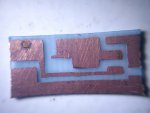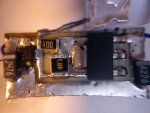- Joined
- Oct 26, 2007
- Messages
- 5,438
- Points
- 83
Bucking circuits need specially designed PCBs to function efficiently and components like inductors, etc. that many people aren't skilled enough to source and design for. The beauty of linear regulators is that it doesn't require anything special to make it work, nor really any tuning aside from setting a resistance between 1.25V. It's probably the best decent constant current circuit one can build as a first-timer.





